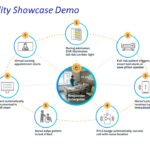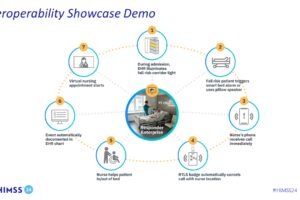Alarming effects have been found from recent digital technologies on social connections and mental health. The Surgeon General issued a highly publicized advisory on loneliness and another on youth, both replete with evidence of the harm done by social media and the internet generally. But can digital technology also improve social connections?
While the harm done by digital media to many people has been well demonstrated, there are also people who thrive on digital connections, particularly people from marginalized groups who have trouble finding each other in physical settings). The Surgeon General advisory on youth points that out on page 6.
Another at-risk population is the elderly. The National Academy of Sciences finds that 43% of adults over the age of 60 report feeling lonely. Clinicians and payers would also be interested in the study’s finding that this loneliness makes it harder for these people to use the health care system. It’s natural to lose social contacts as you get older: your friends and family are moving away or dying, you find yourself unable to drive and get around, and you may have to leave your home and familiar friends for an institutional setting.
Making Social Media More Social
Sara Shanti, a partner specializing in health care at law firm Sheppard Mullin, says that social media and technology platforms could be engineered to do better at forming healthy communities and positive interactions.
When conversation turns to depressing or difficult topics, the platform could prompt members to deal with the feelings more constructively. For instance, it could ask a young person to describe a difficult time in their life and how they got through it, or discuss their plans for the future.
Gamification is a powerful tool for behavior change. A conference called Games for Health brought together practitioners for several years.
Shanti and Dr. Wen Dombrowski, chief convergence officer of CATALAIZE, point out that social networking platforms can bring together people with shared interests such as music, arts, health conditions, and social causes. Some sites are general platforms that engage people with many different interests, while others are designed specifically for a particular niche.
Shanti also sees technology that helps people find peers in their local community and encouraging them to meet at a gym, gardening club, etc. Religious institutions, which are well-known for forming strong communities, could also be found online.
Shanti says the institutions with the incentives to improve the use of technology to solve isolation include payers and employers, especially employers with remote workers.
Many Ways to Approach Loneliness
As pointed out by Dor Skuler, CEO and cofounder of Intuition Robotics, loneliness is not the same as social isolation. Loneliness is a subjective feeling, which is often caused by social isolation but can also spring from a feeling of alienation.
Thus, individuals who are different from others in some way—because of race, disability, or sexual preference—often feel lonely even when they’re surrounded by people. Not only do the people surrounding the marginalized person fail to provide emotional support; they may even be threatening. Furthermore, someone is who is depressed can feel alienated from other people, with a similar sense that they are a threat.
Thus, approaches to social isolation include the following interventions, all of which we’ll see in this series:
- Physically connecting the lonely individual with others in their geographic community
- Providing online connections to people who can’t meet other people face-to-face for health, logistical, or other reasons
- Treating the underlying psychological depression and sense of alienation
How do clinicians and public health officials measure loneliness, given how subjective it is? Skuler says that the current standard is the UCLA Loneliness Scale. Other universities are working on sales that do better at measuring objective conditions of loneliness and social isolation. Surveys rely on patient-reported outcome measures (PROs) to indicate isolation and loneliness.
Upcoming articles in this series will look at each of the three types of interventions listed here.













